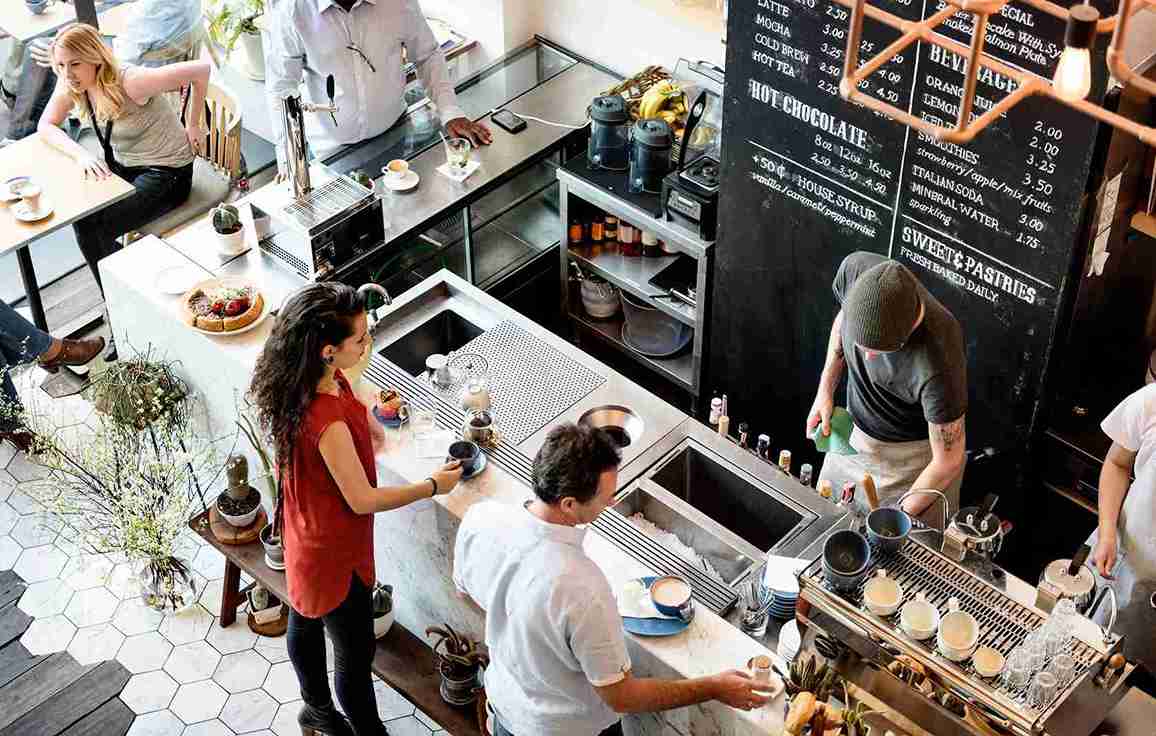 SHARE
SHARE
What is a Chain Restaurant? Understand the Concept, Benefits, and How to Start One
Sovia
Ever wondered how one restaurant brand can appear in so many places while maintaining the same great taste?
That’s the power of a chain restaurant—a food business model built on standards and operational efficiency.
In Indonesia, the concept of chain restaurants continues to grow, driven by both local and international brands.
Not just in major cities, this model has expanded into smaller towns across the country.
But how do you start one? What are the benefits? And why is this model suitable for the Indonesian market?
This article will answer all of those questions—starting from the definition, key advantages, to strategic steps to build a successful chain restaurant in Indonesia.
What is a Chain Restaurant?
A chain restaurant is a network of restaurants with multiple branches in various locations (typically 4 or more).
Each outlet remains consistent in terms of name, concept, and menu.
Whether managed directly by the central company or through a franchise system, they all follow the same operating standards.
Chain restaurants can come in various formats—fast food, casual dining, or even fine dining—under one brand with standardized operations governed by central management.
For example, Japanese chain restaurants like Marugame Udon operate many branches across Indonesia.
Customers can enjoy the same dining experience no matter where they go.
Chain restaurants have become increasingly common in both big cities and small towns.
Global brands such as KFC, McDonald's, and Starbucks are now easy to find in shopping malls and office areas.
Local brands are also catching up, developing similar systems to expand their market reach.
In Indonesia, notable local chains include HokBen (Japanese-style fast food with around 387 outlets as of 2025), and Restoran Sederhana, which has opened over 100 locations since the 1970s.
One of the key drivers of this growth is a shift in lifestyle.
Busy routines lead many people to opt for fast, convenient meals.
On top of that, Indonesia's stable economic growth supports stronger consumer spending on ready-to-eat food.
With a centralized management system, chain restaurants are able to maintain consistency in taste, service, and branding across all locations.
This gives customers a sense of comfort and trust, knowing they can expect a familiar experience wherever they go.
Chain restaurants are a highly efficient culinary solution—for both consumers and business owners looking to scale with consistent quality.
Key Benefits of Chain Restaurants
Source: freepik.com
Behind every successful chain restaurant are several benefits that make it a preferred choice among entrepreneurs.
From standardized flavor to operational efficiency, everything is designed to offer the best customer experience while simplifying business management.
Here’s a closer look:
1. Standardized Taste and Service
Each outlet follows the same SOP. Menus, flavors, and customer service are designed to be identical, ensuring the same experience wherever customers dine.
2. Reliable Quality Control
Central management implements strict quality control—from carefully selected ingredients to standardized cooking processes and presentation.
3. Operational Efficiency & Economies of Scale
With large-scale operations, chain restaurants can purchase ingredients and equipment at lower prices, reducing costs and increasing profit margins.
4. Centralized Support (R&D, Marketing, Training)
All outlets receive support from the central team, including marketing strategies, staff training, and management systems—streamlining workflows and enabling easier expansion.
5. Stronger Brand Awareness
With multiple branches and consistent branding, chain restaurants are more recognizable, building customer trust and attracting a broader market.
6. Local Adaptation
Global brands like McDonald's and KFC tailor their menus to local tastes, offering items like teriyaki rice, chicken porridge, or special Ramadan meals for Indonesian customers.
Read more: Proven Tips! 15 Ways to Grow Your Culinary Business
Challenges & Drawbacks
- Limited Flexibility in adapting to changing trends or local preferences due to rigid menus and standardized systems.
- High Initial Investment, especially when building company-owned outlets (including capital expenditure for locations, equipment) or franchise licensing and royalty fees.
- Less Personal Touch, as the experience can feel generic compared to independent restaurants that often foster closer relationships with customers.
How to Start a Chain Restaurant
A successful chain restaurant isn’t built overnight.
It takes careful planning, precise execution, and consistency in daily operations.
If you're looking to expand your food business into multiple branches, your initial steps will be crucial to long-term success.
1. Start with One Restaurant
Your first outlet should be fully optimized. Focus on business planning, funding, choosing the right location, and designing the menu.
Ensure your daily operations run smoothly, your team performs well, and your customers are satisfied.
This first branch will become the foundation for your expansion strategy.
2. Refine a Scalable Business Plan
Once your initial restaurant performs well, revise your business plan to support scalability.
Calculate funding needs for new branches, outline hiring strategies, and replicate proven operational systems.
Use performance evaluations from the first outlet to guide improvements.
3. Hire and Train Operational Teams
Make sure every branch understands the SOPs, service standards, and brand culture.
4. Centralize Your Supply Chain
Manage vendors, stock, and ingredient distribution efficiently to maintain quality while keeping costs under control.
5. Expand Gradually
After two stable outlets, continue expanding to new locations.
Avoid rushing. Controlled growth ensures consistent service and easier quality monitoring across all branches.
6. Consider the Franchise Model
To accelerate growth without heavy capital investment, franchising can be an option—while still maintaining control over brand quality.
Read more: 15 Profitable Franchise Business Recommendations with a Capital of 5 - 10 Million for 2025
Why Are Chain Restaurants a Good Fit for the Indonesian Market?
The growth of the middle class and increasing consumer purchasing power continue to drive the expansion of F&B chains.
Modern lifestyles and high mobility push the demand for food that is fast, convenient, yet still high in quality.
Halal-certified supply chains from both global and local brands provide assurance for Indonesia’s Muslim consumers.
FAQs About Chain Restaurants
1. What’s the difference between a chain restaurant and a franchise?
A chain restaurant is usually owned by a single company that operates its own branches (or a mix of company-owned and franchised units).
A franchise allows external parties (franchisees) to open outlets under the same brand, following the franchisor’s standards.
2. How many outlets are considered a chain restaurant?
Typically, a minimum of 4 outlets owned by a single entity that applies consistent standards qualifies as a chain restaurant.
3. Are all chain restaurants franchised?
Not always. Many local brands like HokBen and Kebab Turki Baba Rafi use a hybrid model: some outlets are company-owned while others are managed by franchisees.
4. How much capital is needed to start a chain restaurant?
The required capital varies greatly depending on the concept: location, kitchen scale, equipment, branding, and ownership model (owned vs. franchise).
Large franchises like KFC require investments ranging from tens to hundreds of billions of Rupiah.
5. How do you maintain supply chain consistency?
By managing high-quality vendors, using data-driven inventory systems, diversifying suppliers, and conducting regular quality audits.
Conclusion
Chain restaurants are an ideal solution for food entrepreneurs looking to scale while maintaining consistent standards.
This model enables operational efficiency, strong branding, and a uniform customer experience across locations.
In today’s digital era and fast-paced lifestyle, chain restaurants fulfill the needs of modern consumers seeking speed, quality, and convenience.
However, the key to success in managing a restaurant chain lies in having a fully integrated operational system—from POS, kitchen, and inventory, to financial reporting.
That’s where ESB comes in as the all-in-one solution.
With features like multi-branch management, kitchen display systems, and online order integrations, ESB helps your restaurant stay efficient, consistent, and ready to scale.
Want to manage your chain restaurant more easily and systematically? Talk to the ESB team today and get expert support for your business growth!
 SHARE
SHARE




